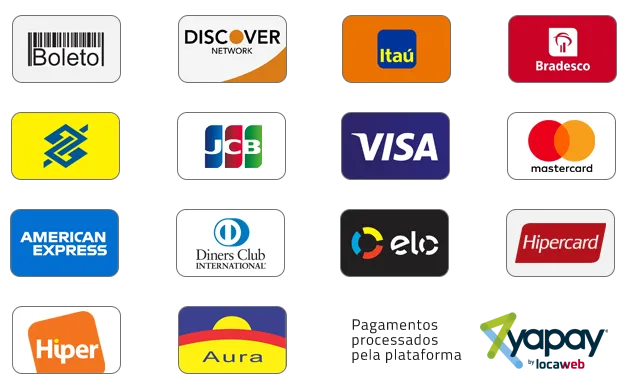What are the Benefits, Uses, and Challenges of DApps?
Content
At their core, dApps possess several key characteristics that set them apart from their centralized counterparts. Firstly, dApps are open-source, meaning that their codebase is publicly available for scrutiny and collaboration. This transparency ensures that the application’s functionality is verifiable and free from hidden agendas. Secondly, dApps utilize decentralized storage mechanisms, such as distributed file systems like IPFS, to store data across a network of nodes rather than relying on a single server. This https://www.xcritical.com/ approach enhances data integrity and resilience against single points of failure. Although decentralized applications are now available through many different blockchains, Ethereum is still the most popular.
Decentralized Data Storage and Its Significance
Although several blockchain networks host DeFi protocols, the first wave was largely built on how do dapps work the Ethereum blockchain. Ethereum is the largest smart contract blockchain and the second-largest blockchain by market cap. Also, the Ethereum development community is among the most active and well-supported in the industry.
Dapps, decentralized apps, what are dApps
These decentralized applications (dApps) and protocols rely on public blockchains and smart contracts to replicate various financial services trustlessly and automate trade agreements. A decentralized app operates on a blockchain or peer-to-peer network of computers. Users engage in transactions directly with one another rather than relying on a central authority to facilitate them. The dApp might be free, or the user might need to pay the developer in cryptocurrency to download and use the program’s source code.
What are the Benefits, Uses, and Challenges of DApps?
Because they are decentralized, dApps are not subject to the oversight and auditing most centralized applications are exposed to. If the application’s programming is rushed, unaudited, or sloppy, hackers will find it easy to break into it. Users should be cautious and do their due diligence when interacting with dApps, as the decentralized nature of these applications can make it difficult to track or hold perpetrators accountable. A web app such as Uber or X (formerly Twitter) runs on a computer system that is owned and operated by a company with authority over the app and its workings. No matter how many users there are, the backend is controlled by the company.
- DApps facilitate the creation of decentralized gaming platforms and virtual worlds where players can securely own and trade in-game assets.
- Plus, if the owner of a social media app decides to block somebody, they can do so without a second thought.
- Say a farmer buys a derivative that automatically pays out if a drought wipes out her crops.
- DApps are one of the most common ways blockchain technology is being used.
- DApps have been developed to decentralize a range of functions and applications and eliminate intermediaries.
Indexing solutions create structured, indexed databases that enable faster and more efficient data retrieval. These solutions often offer real-time data synchronization, allowing dApps to quickly respond to on-chain events. Wallets are used to manage user’s digital assets, authenticate users, and sign transactions on the blockchain. There are different types of wallets available, each with its own advantages and considerations.
The creators built the marketplace and released it, and while it is now maintained by its users, the creators now work on completely separate projects. While dapps promise to solve a lot of the problems faced by regular apps, there are also some disadvantages. Scaffold-ETH – Quickly experiment with Solidity using a frontend that adapts to your smart contract. Next, you may want to add some cryptocurrency to your wallet, which may involve purchasing or transferring the coins or tokens to your wallet address.
Ethereum is a cryptocurrency much the same as Bitcoin, but it was designed to do much more. The Ethereum blockchain can execute complex instructions allowing for applications such as Smart Contracts and various other dApps that are only limited by the imaginations of developers. Each CryptoKitty is unique, owned by the user, and validated through the blockchain.
Still, we recommend you to do thorough research, give some time to decentralized app development ideas and use proper planning and tools. For those who don’t know, uptime is the percentage of time a server or computer has been working for and is available. Because the operations of decentralized applications don’t depend on the set of circumstances of a single node, they can easily maintain higher uptimes. In fact, the failure of 3-4 nodes due to unforeseen issues will not stop other nodes from operating and providing data. Since decentralized applications are based on a shared database, the chances of hijacking are extremely low.
Where for some they may present advantages, there may be some disadvantages for others. Since then there have been a number of different blockchains made to create a more scalable and robust blockchain ecosystem. While the incentive of decentralization still stands, the newer chains can create and launch dApps for a number of reasons which in turn gives the blockchain more flexibility and overall utility. These smart contracts rely on so-called “oracles” that relay up-to-date information about the outside world, like how many inches of rain fell last season. Wallets, exchanges, or the underlying blockchain infrastructure can also be targeted by hackers.
DApps are like an interface for smart contracts and the blockchain. Think of the blockchain as the internet, smart contracts as the World Wide Web, and decentralized applications as YouTube and Facebook. The world of cryptocurrency has not only changed how people view money, but it has also created a range of new and exciting words that did not exist before. One of the most popular buzzwords used by the blockchain community is decentralized applications, otherwise known as dApps. They are like normal apps, and offer similar functions, but the key difference is that they are run on a peer-to-peer network, such as a blockchain, using smart contracts. A decentralized application (DApp) is a type of distributed, open source software application that runs on a peer-to-peer (P2P) blockchain network rather than on a single computer.
By using a decentralized application to verify voters identities, elections can now be safe, secure and transparent. Centralized servers are also bad because if they shut down (because they are hacked or they fail/break), then the whole network will be offline — you wouldn’t be able to access Facebook. This now leads us on to the subject of what, often referred to as a dApp. Before we get into the technology of dApps (or, simply – decentralized applications), it would first be a good idea to understand the history of regular (centralized) apps and how they function. We’ll then explain why making these apps decentralized is so important. So, now that you understand what decentralization is, and how it can be applied to money, the next step is to understand the role of a smart contract in the decentralized application world.
The benefits of decentralization, such as enhanced security, transparency, and user control, are attracting developers and users alike. However, the journey towards widespread adoption is not without challenges. Scalability, user experience, and regulatory considerations are among the hurdles that dApp developers must navigate.
A good place to start researching dapps is DappRadar, a website that lists thousands of dapps built on networks including Ethereum, BNB Chain and Polygon. NFTs have become increasingly popular, enabling the creation and trading of unique digital assets on blockchain networks. DApps in this space allow artists, creators, and collectors to tokenize and trade digital art, collectibles, virtual real estate, and more.
With BitTorrent, you’re sharing data with other peers just as you are downloading data for your own use. BitTorrent isn’t really thought of as a dApp in the modern sense, although it is literally a decentralized app. One of the primary challenges regulators face with dApps is their decentralized nature. Traditional regulatory considerations are usually based on a specific location; since dApps are not centralized, it’s tougher to regulate activity based on where transactions occur.
Many developers and enthusiasts praise DApps and the underlying technology behind them. The DApps space has now evolved into a multi-million dollar market. A multi-million dollar market may sound like a lot, but considering the value of the traditional app market is in the hundreds of billions of dollars, DApps are just a drop in the bucket. However, don’t expect these to operate as efficiently or be as feature-rich as traditional apps as they don’t have the resources at the current time. Many of them are built on Ethereum, the leading blockchain-based DApps platform. There are DApps for every category, including finance, gaming, productivity, and many others.
To streamline the dApp development process and ensure code quality, it is recommended to follow best practices and leverage available tools and frameworks. Version control systems like Git help manage code changes and collaborate with other developers. Integrated Development Environments (IDEs) such as Remix or Truffle provide features like syntax highlighting, debugging, and testing tools specifically designed for blockchain development. When designing the user interface, prioritize simplicity, intuitiveness, and a seamless user experience. Keep in mind that users may be unfamiliar with blockchain technology, so aim to create an interface that abstracts away the complexities and provides clear guidance.


